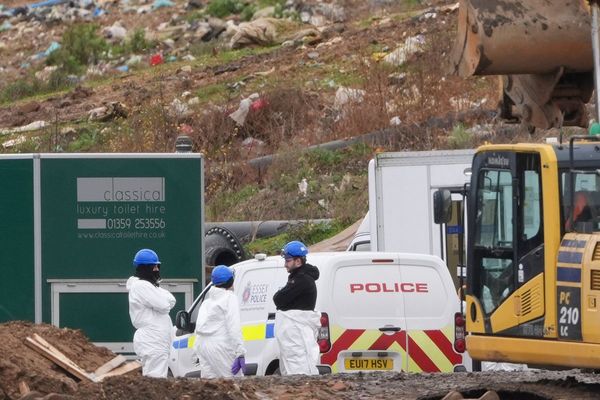“This isn’t a prison,” a nun in the new BBC drama The Woman in the Wall says. “You can leave anytime you want. But where would you go? Who would have you? No one wants you. You’re a sinner.”
Set in the fictional town of Kilkinure in 20th-century Ireland, the show captures the story of Lorna Brady (Ruth Wilson), an unmarried mother who was formerly detained in a Magdalene Laundry. Established in the 18th century, the laundries catered for so-called “fallen women” who had engaged in sex work or had a child outside of wedlock. Ten of these institutions operated in post-independence Ireland between 1922 and 1996 and at least 10,000 women spent time in them.
Laundries were just one of many mechanisms by which the Catholic Church and the Irish state regulated behaviour that was perceived as deviant. The official investigation into Mother and Baby Homes (institutions similar to laundries where women who had children outside of wedlock were confined) forms the backdrop to events in Kilkinure. This serves as an important reminder that the laundries were part of a broader architecture of containment that included institutions such as industrial schools and psychiatric hospitals. By the 1950s, 1% of Ireland’s population was contained in institutions of coercive confinement.
Flashbacks to Kilkinure Laundry punctuate the drama to demonstrate the soul-destroying conditions experienced by detainees. They suffered forced labour, beatings, inadequate nutrition and various forms of abuse. Their hair was cut off, they were often assigned new “house names” and they were sequestered from the outside world.
The Magdalene Oral History Project and Waterford Memories Project address not only what it meant to experience these institutions, but also “what it meant to survive the laundries”.
Dramatising the laundries
For Lorna, surviving the laundry results in visceral hallucinations and sleepwalking, in addition to separation from her child (who was taken from her and presumably given up for adoption). While further research is needed into the system of secret adoptions in Ireland, one estimate places the number of illegal adoptions of children at a staggering 15,000.
Although not all women in the laundries were unmarried mothers – many were victims of domestic and sexual abuse, were destitute or deemed “at risk” of immorality – trauma is a common experience among survivors. As one recalled to the Commission to Inquire into Child Abuse: “The older I get I find these years haunt me, I will carry it to the grave with me … The nuns made you feel as if you’re a nobody and you never have any roots.”
The theme of recurrent injustice surfaces throughout the series. Lorna and her contemporaries have not been recognised by the state as detainees of a laundry. Instead, Kilkinure Convent has been classified as a training centre.
The survivors meet with a representative of a lobby group called Éadrom (the Irish word for “light”). This storyline closely mirrors reality. The state’s initial response to the laundries was to claim that they were private institutions and the state was not involved.
The Justice for Magdalenes group, whose campaign was most active between 2009 and 2013, sought to secure a state apology for women detained in these institutions in addition to a redress scheme. An interdepartmental committee was established and its 2013 report found “evidence of direct state involvement” in the laundries. The report, however, was criticised for minimising the harm suffered by women and marginalising their experiences.
A formal state apology was offered in February 2013 by taoiseach Enda Kenny, who described the laundries as the “nation’s shame”. A redress scheme was established with women given ex gratia payments based on how long they were in the laundries. But survivors who worked in laundries and lived in nearby training centres or industrial schools were excluded (this was later addressed in 2018).
The religious orders who ran the institutions did not contribute to the redress scheme, nor did they offer a formal apology. Their silence speaks volumes. Like Sister Eileen (Frances Tomelty), the fictional Mother Superior at the time of Lorna’s detention, this failure to engage (or to accept responsibility) communicates a profound lack of repentance for the abuses that occurred in the laundries.
Other depictions of the laundries
The Woman in the Wall is not the first cultural representation of a Magdalene Laundry. Films such as The Magdalene Sisters (2002) and Philomena (2013) have also explored this powerful subject matter. But the BBC show’s creator and writer Joe Murtagh is the first to use the medium of a “gothic thriller” to explore the laundries’ painful nature and legacies – and the effect is unnerving.
Jolting shots of a room in Lorna’s house (where she stores a box of photos and newspaper clippings relating to Kilkinure Laundry) are filmed in an ominous crimson hue. Red devil horns are placed on Lorna’s head by a drunken member of a hen party. References are made to a banshee (a female spirit in Irish folklore whose wailing foretold impending death).
Lorna’s world is one where nightmares become reality, where ghosts haunt the living, and where the line between sanity and insanity is blurred and uncertain. The Woman in the Wall exposes the horrors of the Magdalene Laundries and in doing so seeks to ensure that such horrors will not be repeated in the future. It does not make for comfortable viewing and nor should it. But it is essential viewing in every sense.

Looking for something good? Cut through the noise with a carefully curated selection of the latest releases, live events and exhibitions, straight to your inbox every fortnight, on Fridays. Sign up here.
Ciara Molloy does not work for, consult, own shares in or receive funding from any company or organisation that would benefit from this article, and has disclosed no relevant affiliations beyond their academic appointment.
This article was originally published on The Conversation. Read the original article.







